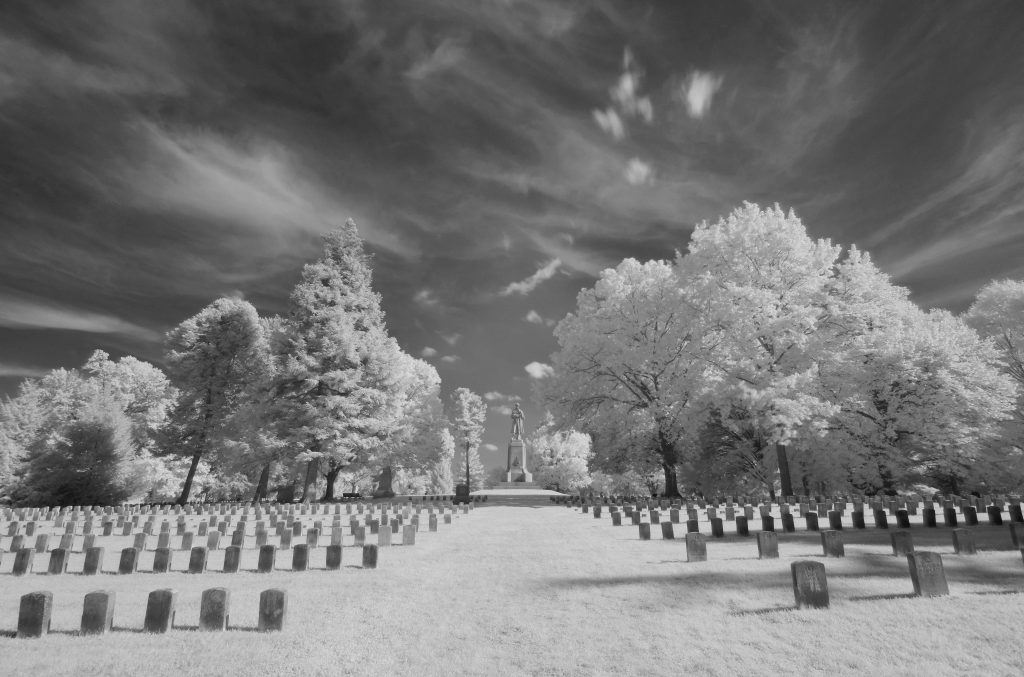A Thousand Words a Battle: Antietam
Battle of Antietam
September 17, 1862
Following victories in the Seven Days’ Battles and at the Battle of Second Manassas, Gen. Robert E. Lee led his army across the Potomac River into Maryland. Lee and the Confederacy sought one more battlefield victory, which they hoped might gain their independence, achieve foreign recognition, influence upcoming midterm elections in the North, and bring Maryland into the Confederacy all while giving Virginia a respite from war. Following engagements at South Mountain and Harpers Ferry, Lee’s army came to rest behind Antietam Creek outside of Sharpsburg, where it faced off against Maj. Gen. George B. McClellan’s Army of the Potomac.
On Wednesday, September 17, 1862, the seventy-fifth anniversary of the signing of the United States Constitution, McClellan attacked. An all-day battle raged and made famous landmarks out of David Miller’s 24-acre cornfield, a sunken road utilized by local farmers, a three arch stone bridge that spanned Antietam Creek, and more. After thirteen hours of fighting, approximately 23,000 men fell as casualties, making Antietam the bloodiest single-day battle in American military history.
Union brigade commander Brig. Gen. George Gordon penned his thoughts on the Battle of Antietam in his after-action report, written just one week after the battle:
Thus terminated a bloody and obstinate contest. From sunrise to sunset the waves of battle ebbed and flowed. Men wrestled with each other in lines of regiment, brigade, and division while regiment, brigade, and division faded away under a terrible fire, leaving long lines of dead to mark where stood the living. Fields of corn were trampled into shreds, forests were battered and scathed, huge limbs sent crashing to the earth, rent by shell or round shot. Grape and canister mingled their hissing scream in this hellish carnival, yet within all this and through it all the patriots of the North wrestled with hearts strong and nerve unshaken—wrestled with the rebel hordes that thronged and pressed upon them as to destruction; never yielding, though sometimes halting to gather up their strength; then with one mighty bound throwing themselves upon their foes, to drive them into their protecting forest beyond. We slept upon the bloody field of our victory.[1]
After Lee and his unsuccessful army withdrew back into Virginia, President Abraham Lincoln announced the Preliminary Emancipation Proclamation on September 22, 1862. Antietam’s dark day provided a glimmer of light for the United States and for four million slaves.
— Kevin Pawlak
[1] OR, vol. 19, pt. 1, 496-97.

Nineteenth Century purple prose at its best. Lee wished he had a “rebel horde”!
Lincoln needed a Union victory in order to issue his Preliminary Emancipation Proclamation. That victory came on Sunday September 14th at the Battle of South Mountain where the Confederates suffered 1,000 dead at Turner’s and Fox’s Gaps plus whatever the Confederates lost at Crampton’s Gap. The great victory at South Mountain was stolen over the ensuing years by all the authors who failed to do the research necessary. Hood never came closer than half a mile of Fox’s Gap and has been awarded hero status. The Confederates were surrounded on three sides at Fox’s and Turner’s Gaps. For the number of forces involved, South Mountain was just as bloody as Antietam. South Mountain turned the Maryland Campaign into the Union’s favor. Lincoln did not issue his proclamation because Antietam was the bloodiest day in American history. Lincoln made a vow with God that if the Union Army won the next battle, which was South Mountain, he would issue his proclamation. The Battle of South Mountain has been turned into a terrible case of Stolen Valor!